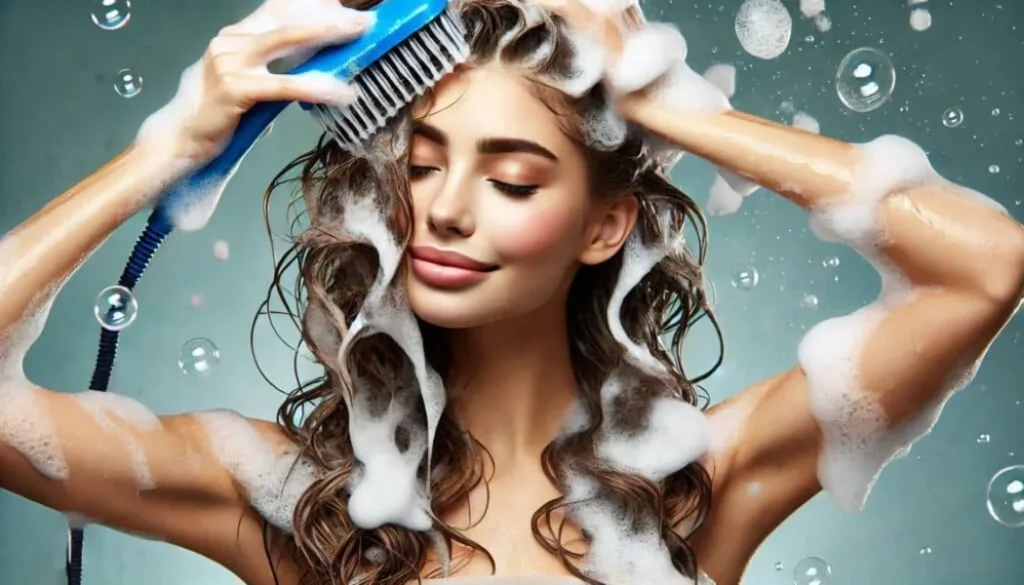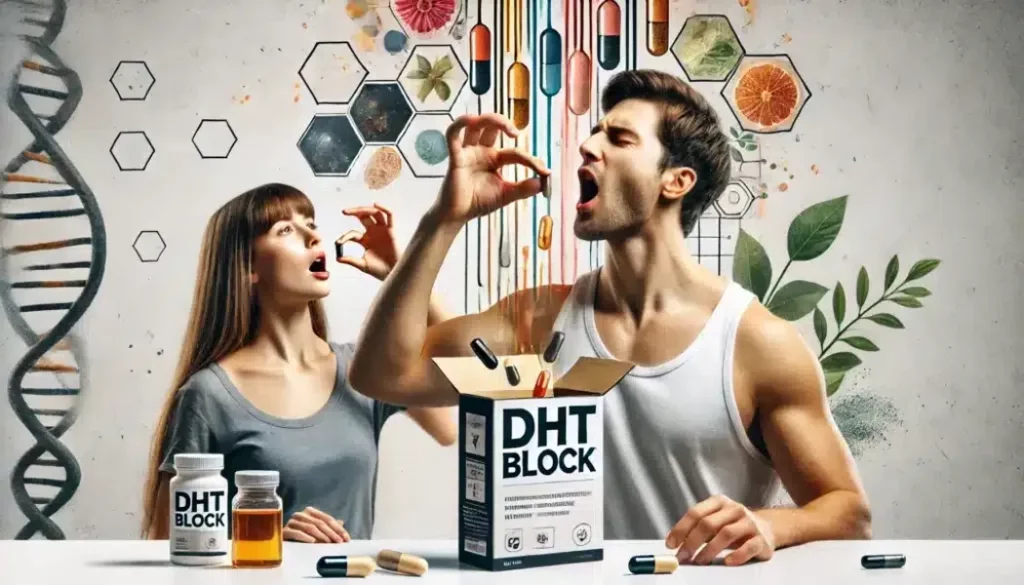Dihydrotestosterone, or DHT, is a hormone that’s not only relevant in the scalp but also plays a role in various bodily functions. It’s derived from testosterone, which is present in both men and women, and it contributes to the development of male characteristics. But when it comes to hair, DHT can be a real troublemaker. 😠 It’s often blamed for shrinking hair follicles, leading to thinning and, eventually, hair loss.
Both men and women deal with hair thinning, but it often appears in different patterns. While men may notice a receding hairline or bald spots, women usually experience general thinning across the crown. This difference is due to how DHT interacts with other hormone levels in the body.

The process starts deep in the hair follicle. When DHT levels rise, follicles gradually shrink. This not only reduces the number of hairs but also makes them thinner and more prone to breakage. Over time, some follicles may stop producing hair altogether — resulting in noticeable thinning or bald areas.
Unpacking the science behind DHT’s impact can seem daunting at first 😵, but understanding it is the first step to fighting back. By recognizing how this hormone works, you can better tailor your hair care routine and keep those locks as healthy as possible. 💪
🌿 Identifying and Reducing DHT Production
DHT plays a significant role in hair health, but here’s the good news — small lifestyle tweaks can help manage its levels. Stress is a prime culprit. 😬 When you’re stressed, your body produces more hormones, including those that influence DHT. Finding ways to relax can help keep your hair happy and healthy. 🧘♂️
Alcohol might be your go-to for unwinding, but overdoing it can boost DHT levels. Cutting back even a little can make a big difference for your hair. 🍺❌ Alongside alcohol, smoking brings its own problems — it can disrupt your hormonal balance, increasing DHT and wreaking havoc on your scalp.
Living surrounded by pollution isn’t just bad for your lungs — it can impact your hair too. While moving might not always be an option, taking extra care to cleanse your scalp can help shield it from environmental aggressors that may spike DHT. 💨
Let’s talk about staying active. A bit of daily exercise boosts your endorphins and helps regulate hormone levels — including DHT. On the other hand, an inactive lifestyle could tip the balance the wrong way. 🏃♀️💨

And of course, eating right ties it all together. Poor nutrition can trigger hormonal chaos, pushing DHT production into overdrive. By eating a balanced diet loaded with nutrients, you support hormone stability — and stronger, healthier hair. 🥦💪
By avoiding these risk factors, you’re already doing half the job. For the other half, the right products can lend a helpful hand.
🧴 The Role of DHT Blocking Shampoos in Hair Care
DHT-blocking shampoos are like the secret weapon in your hair care arsenal. 🧼 These products are formulated specifically to tackle the pesky problem of DHT. So, what makes them effective? It’s all about the ingredients — these shampoos usually contain natural blockers that stop DHT from doing its worst.
You’ll often find Saw Palmetto, a well-known plant extract that inhibits the enzyme responsible for converting testosterone into DHT. 🌿 Then there’s Pumpkin Seed Oil, rich in phytosterols that help interrupt DHT production. And let’s not forget Ketoconazole, a common anti-dandruff ingredient that also works to control DHT on the scalp.
Caffeine might sound more like a morning essential ☕, but in shampoos, it boosts blood circulation to the scalp, helping to counteract DHT’s impact. Biotin (vitamin B7) doesn’t block DHT directly but nourishes your hair with the nutrients it needs to thrive.
Other MVPs include Nettle Root Extract, trusted for generations for its DHT-fighting properties, and Green Tea Extract, full of antioxidants that may reduce hair loss linked to DHT. 🍵 Together, these ingredients form a powerful formula to fight thinning hair.

Blocking DHT isn’t the only benefit — these shampoos also promote thicker, stronger hair, thanks to their nourishing compounds. ✨ And let’s not forget: a clean, healthy scalp is the foundation of any great hair day.
Incorporating a DHT-blocking shampoo into your routine could be a game-changer — especially when paired with stress management, proper nutrition, and smart styling habits. 💡
💧 Complementary Products: Supplements and Conditioners
DHT-blocking shampoos are fantastic, but they’re not alone in this battle. Supplements and topical conditioners can give your routine that extra boost you might be looking for. 🛡️
When it comes to supplements, you’ll find options that target DHT from the inside out. They typically contain natural ingredients like Saw Palmetto and Green Tea Extract, which work to curb DHT production within the body. 🌿
Topical Conditioners work externally by acting directly on the scalp. These formulas often include active compounds that block DHT at the source, helping manage hair loss more effectively. 🧴

If you’re still on the fence 🤔, hearing from real people who’ve used these products can be incredibly helpful. Testimonials and reviews often offer valuable insight into how well supplements and conditioners have worked in practice — and what results are realistically achievable.
⚠️ A quick word of caution: Both supplements and conditioners can have side effects, especially if you have sensitivities or pre-existing health conditions. It’s always smart to check in with a healthcare provider to tailor the safest and most effective approach for your hair journey. 👩⚕️
🧴 Choosing the Right Products for Different Hair Types
Hair care isn’t a one-size-fits-all game, and picking the right DHT-blocking shampoo means recognizing your unique hair type. 🧠✨ Different hair has different needs, and finding the perfect match starts with knowing your own strands.
If you have oily hair, look for shampoos that offer a deep cleanse while still managing DHT. For dry hair, focus on products that provide moisture alongside DHT protection. And if your hair is on the finer side, lightweight formulations can help retain volume without weighing it down. 💨

Tailoring your routine based on hair texture and type can make a huge difference when using DHT-blocking products. It’s about understanding what makes your hair thrive — and leaning into it. This personalized approach doesn’t just fight hair loss, it amplifies your hair’s natural potential.
🧪 Tip: When selecting a new product, keep an eye out for independent certifications, ingredient transparency, and real user reviews. That way, you’ll avoid wasting time and money on ineffective formulas. 🔗 Cleveland Clinic – Shampoos & hair‐loss: what to know
Remember, managing hair health is a journey. 🚶♂️ Alongside lifestyle improvements and the right products, achieving your hair goals takes consistency, a bit of patience, and experimentation. Stick with it — and your hair is bound to reward you in return. 💚
Stay with us — the best is yet to come.
By following our advice, you’re doing the most you can for your hair.
Be the first to know when we publish new guides, tests, and proven strategies for stronger, healthier hair.
👉 Visit the About Me page to learn more about my journey, mission, and why helping people with hair health is so personal to me.
Want healthier, stronger hair? Discover 8 science-backed habits that protect your scalp and boost natural growth. Get your free PDF guide today!
Disclaimer: This article is for informational purposes only and is not a substitute for professional medical advice. Sensitive claims are supported with scientific references, and full product details can always be found on the official websites of the respective manufacturers or distributors.
Some links in this article are affiliate links. If you choose to make a purchase through them, I may earn a small commission at no extra cost to you — helping me keep HairGrowGenius running. Thank you for your support!

✅ FAQ: DHT‑Blocking Shampoos – What Actually Works?
❓Do DHT‑blocking shampoos really work?
There’s limited clinical proof, but ingredients like ketoconazole, saw palmetto, pumpkin seed oil, caffeine, and finasteride (in topical form) show potential to reduce DHT activity at the scalp and support hair growth. Shampoos can complement—but not replace—standard treatments.
❓What’s the evidence for ketoconazole?
Shampoos with 2% ketoconazole, used regularly and left on the scalp for several minutes, have shown to disrupt DHT locally and support hair density. When combined with finasteride, effectiveness increases.
❓Which natural extracts are worth considering?
Saw palmetto and pumpkin seed oil have decent evidence for inhibiting the enzyme that turns testosterone into DHT. Green tea (EGCG) and rosemary oil are also promising natural blockers.
❓Can caffeine or other scalpadic ingredients help?
Caffeine, zinc, niacinamide, and botanical oils (jojoba, tea tree, rosemary) may improve circulation, scalp health, and follicle strength. They’re supportive but not stand-alone solutions.
❓What are practical tips for using DHT shampoos effectively?
- Choose shampoos with active blockers like ketoconazole or saw palmetto.
2. Let the shampoo sit on your scalp 3–5 minutes per wash.
3. Use consistently for at least 6 months.
4. Combine with proven treatments like topical minoxidil or oral 5α-reductase inhibitors for best results.
5. Patch test first and avoid harsh surfactants if you have sensitive skin.
🧠 FAQ section added on June 25, 2025, to clarify the real-world value of DHT-blocking shampoos for hair loss.


Leave a Reply